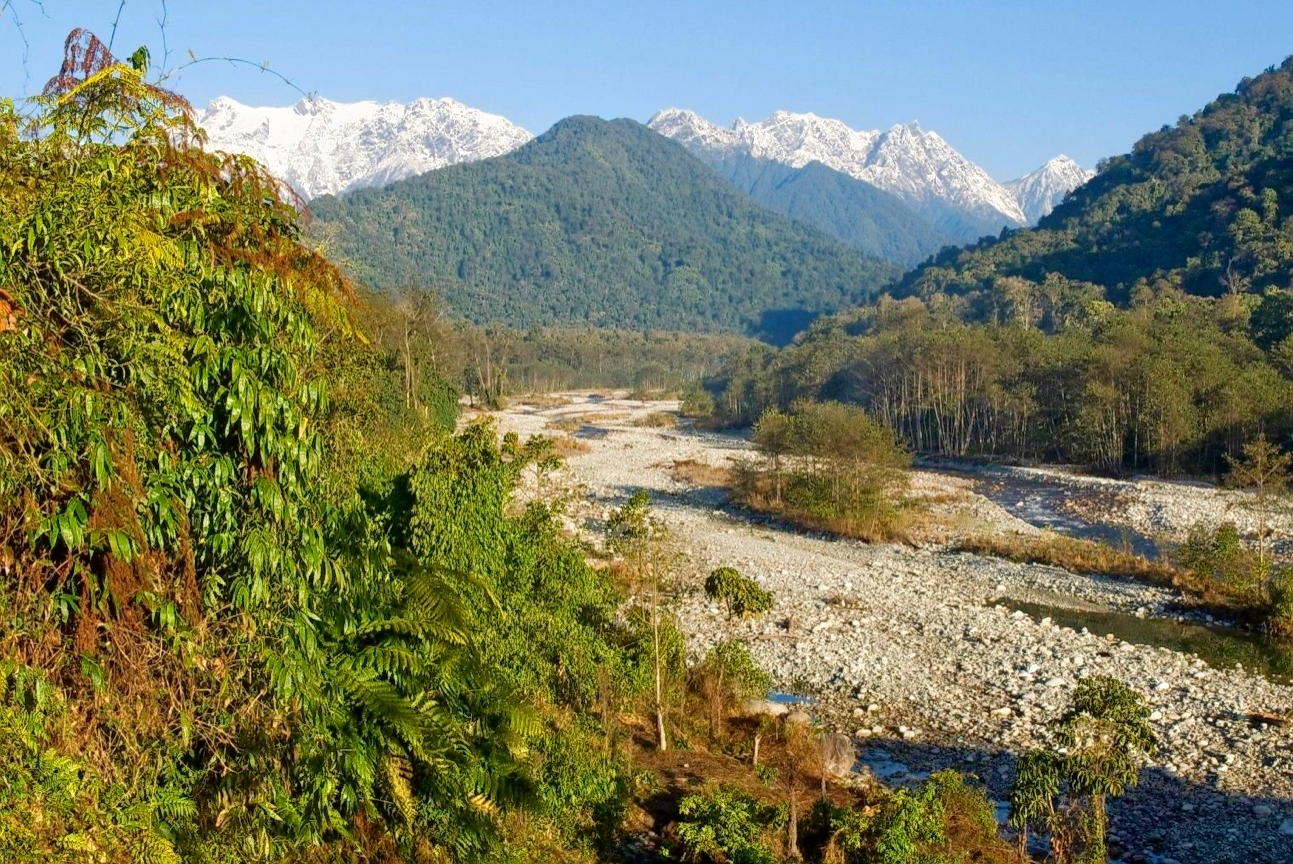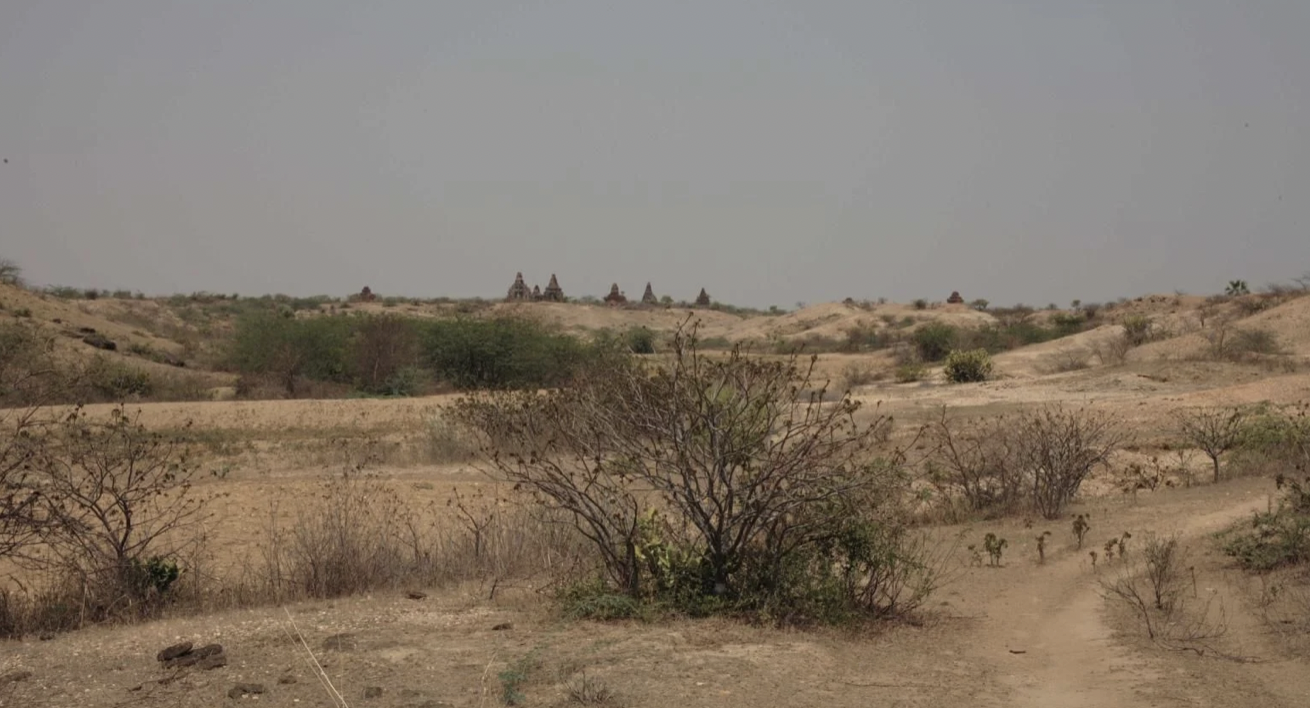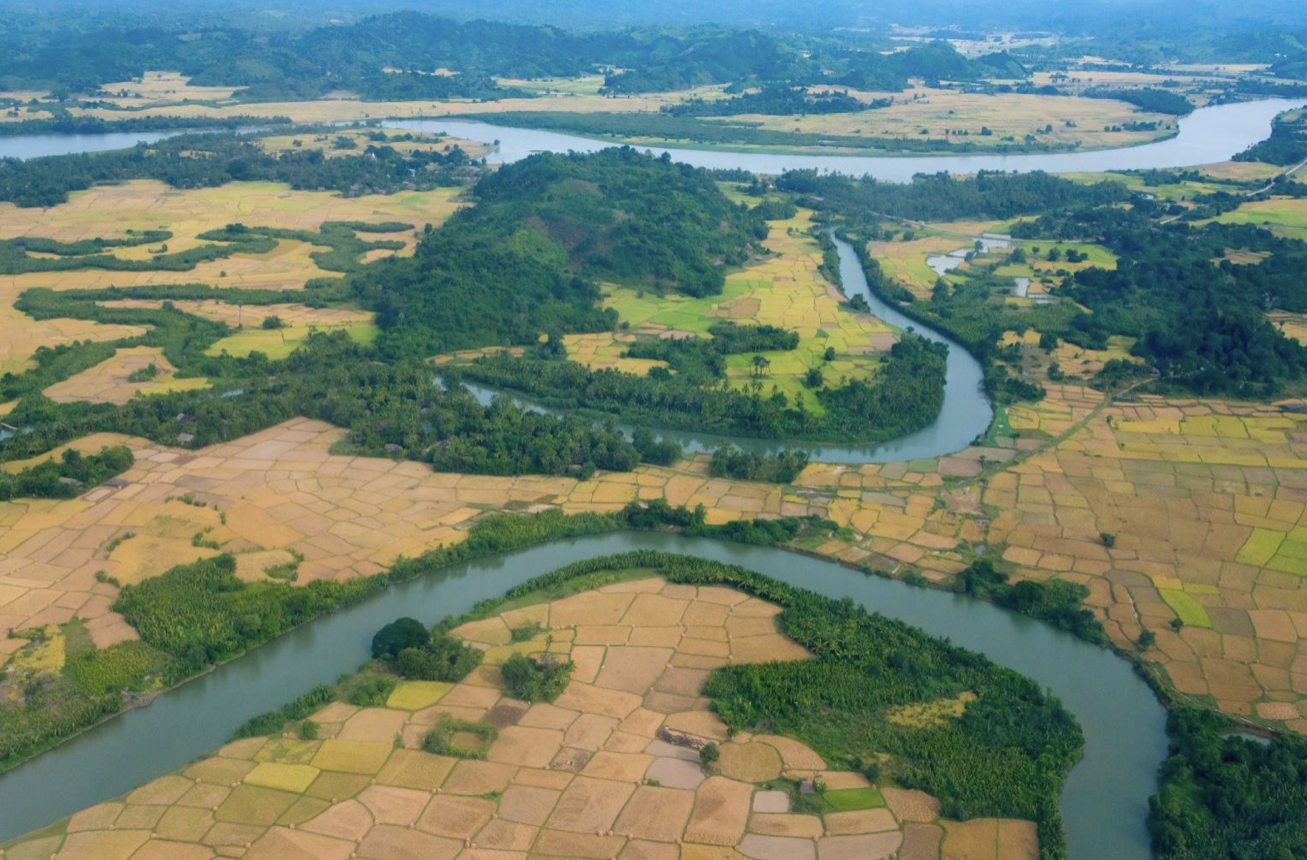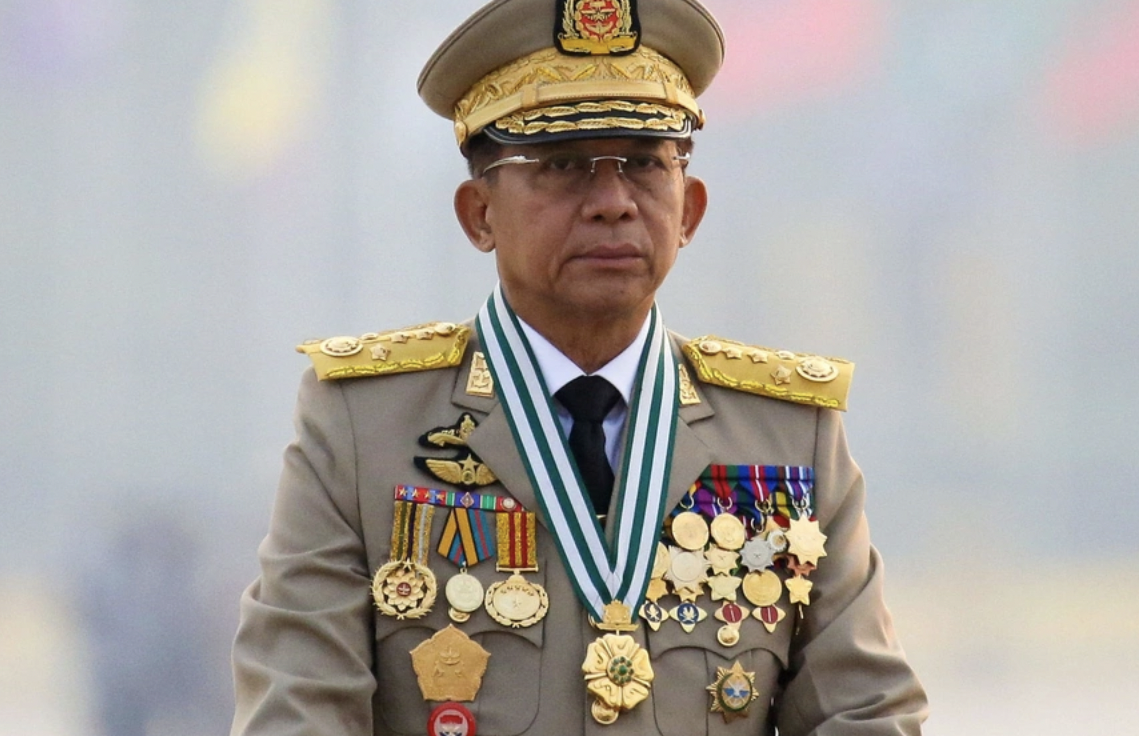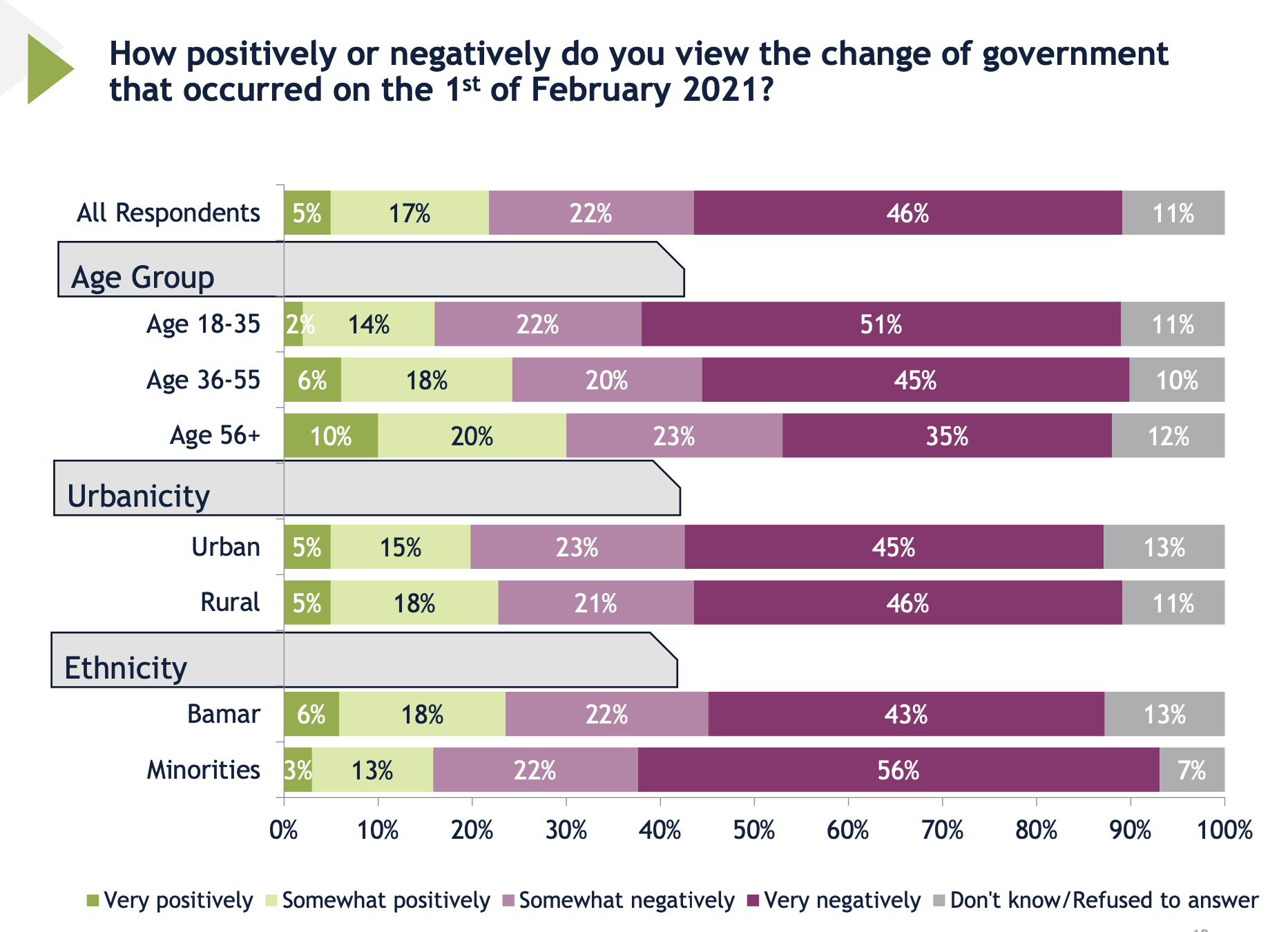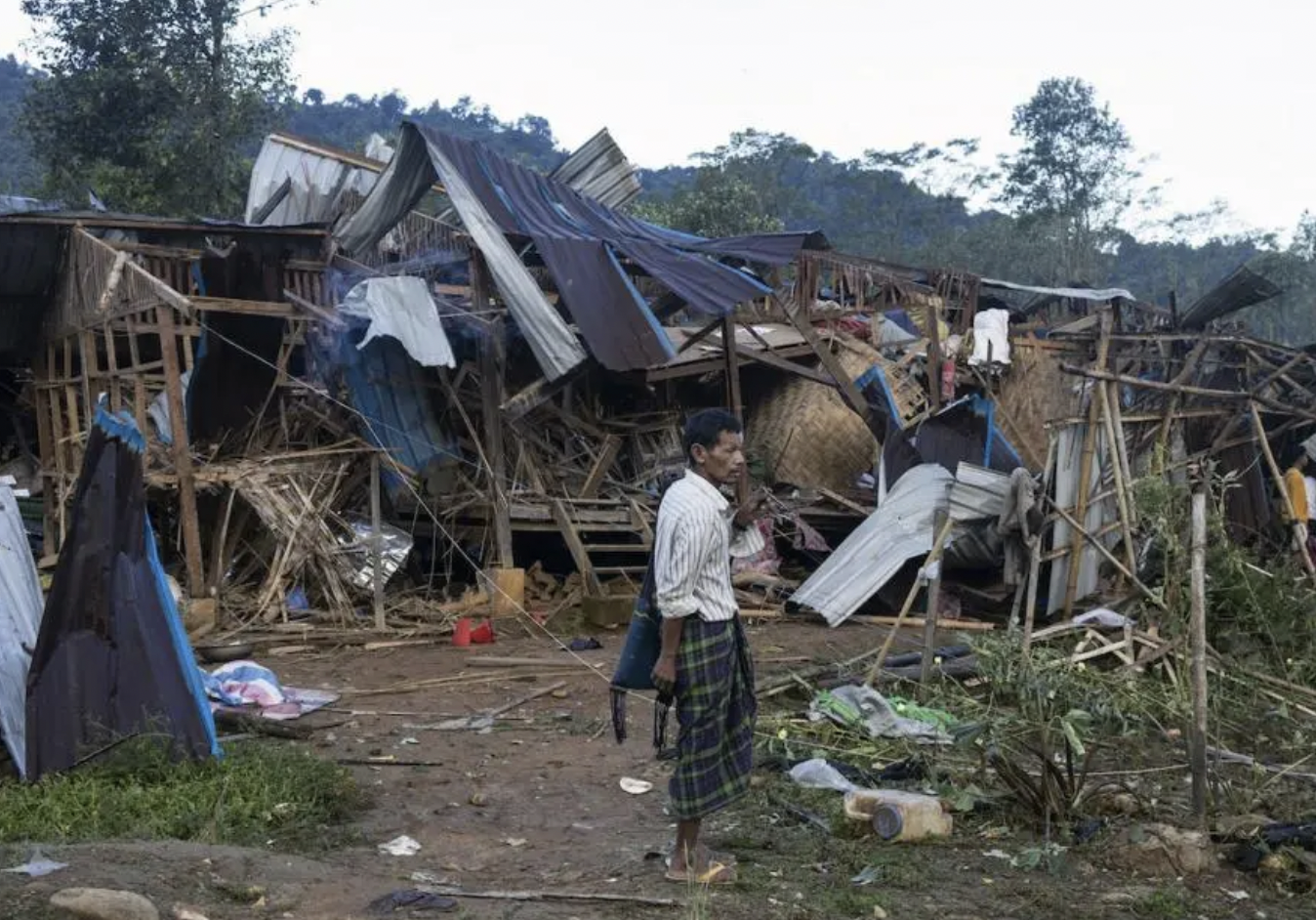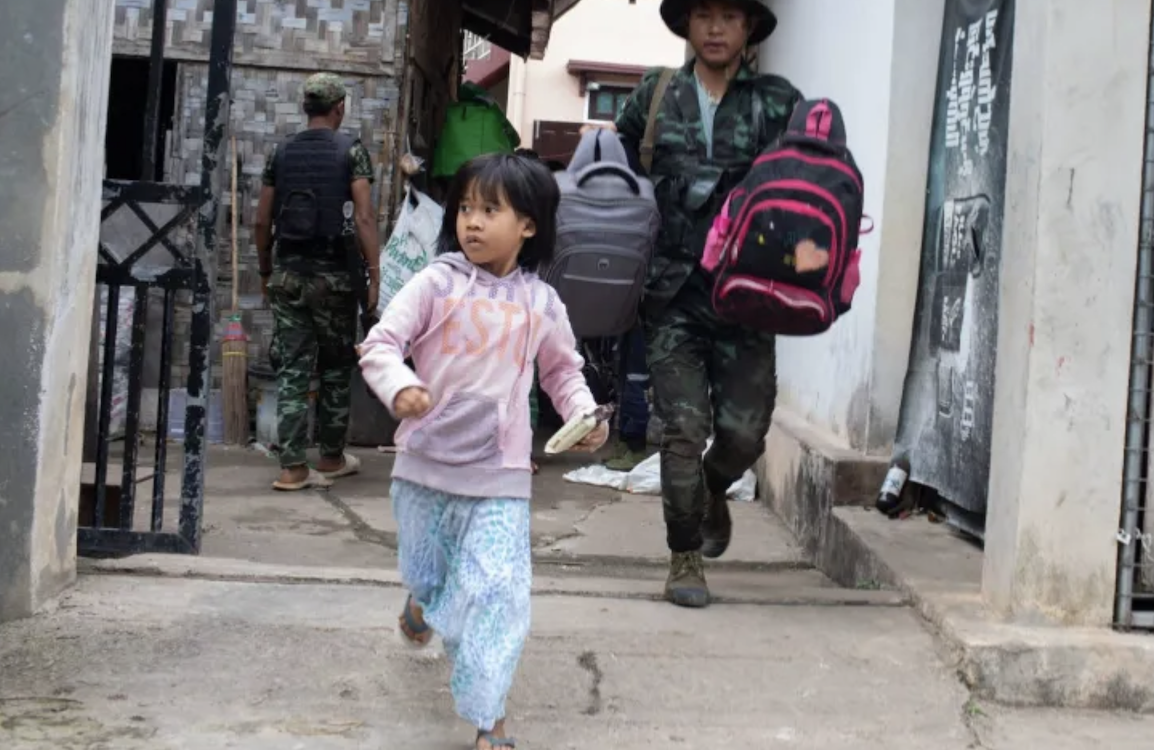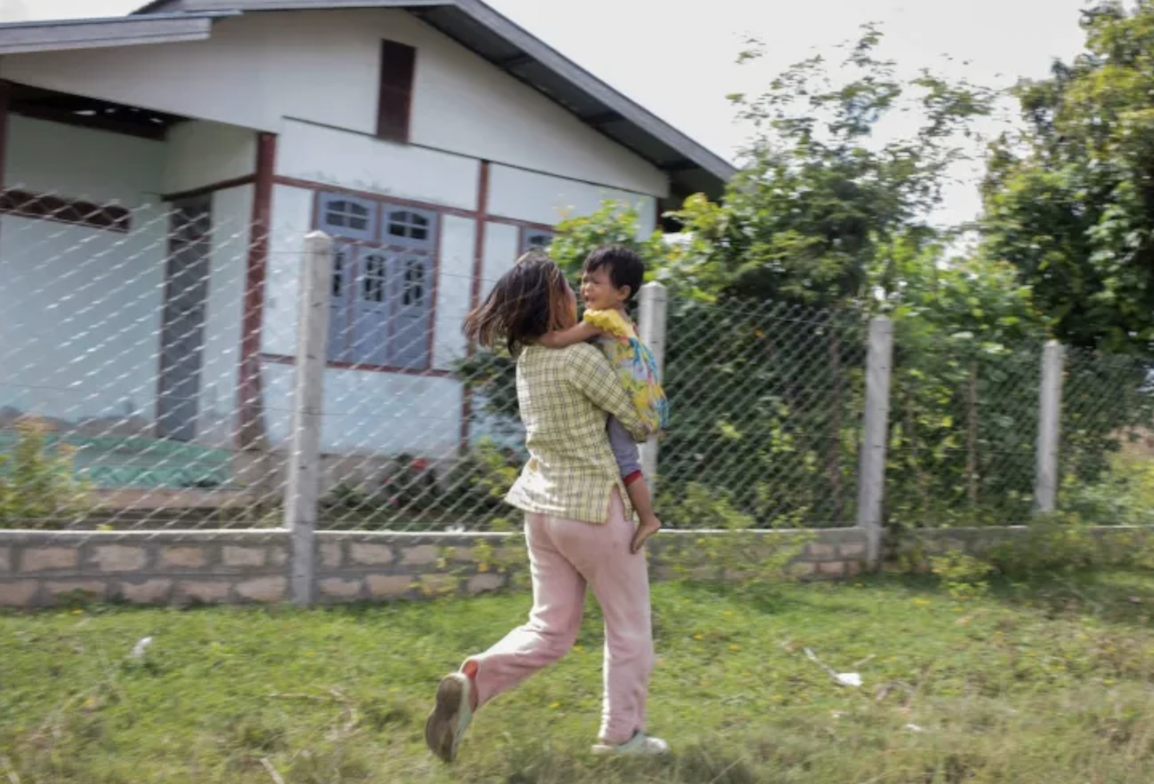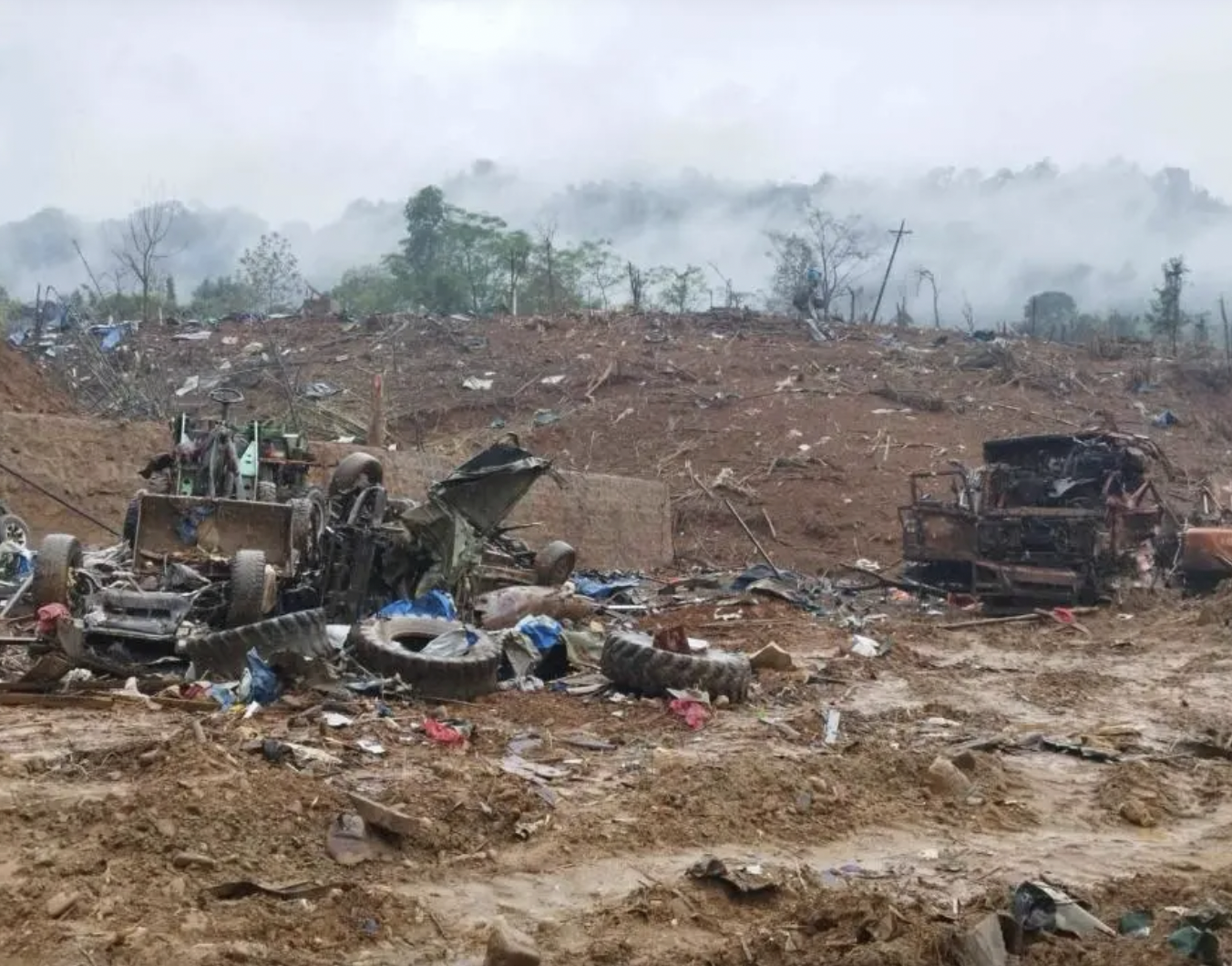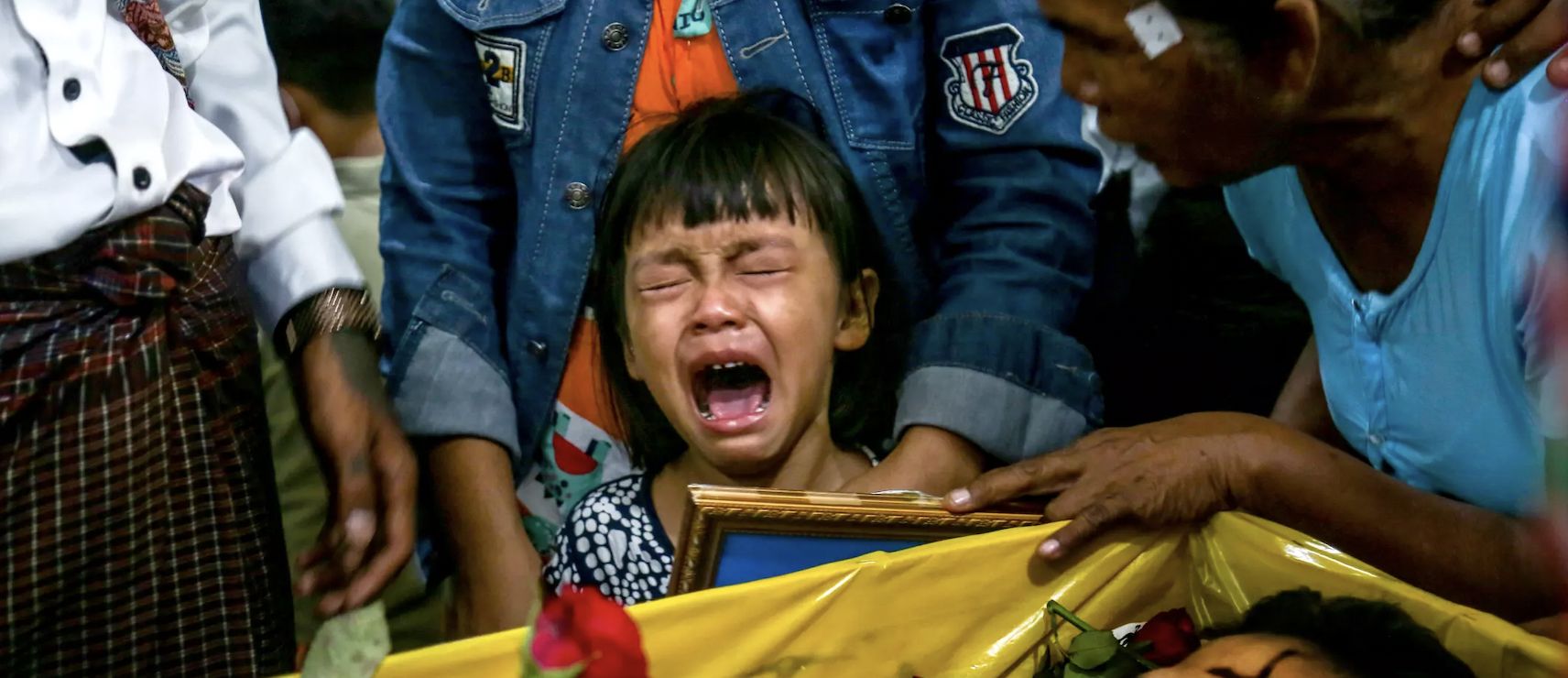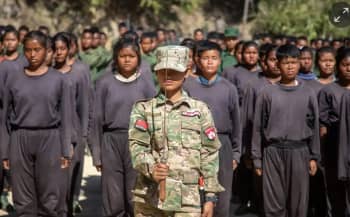The Conflict In Myanmar
Myanmar, also known for their English name Burma, is a small country located in Southeast Asia, bordered by China and Thailand. Situated above sea level at an elevation of 19,296 feet, the country is also surrounded by mountain ranges and plains (Steinberg & Arthur Aung-Thwin, 2025).
Mulah river, Phon Kan Razi Wildlife Sanctuary, Kachin State. Sourced from: Green, Alexandra. An Abundance of Riches: Myanmar’s Many Landscapes | British Museum, 1 Nov. 2023, www.britishmuseum.org/blog/abundance-riches-myanmars-many-landscapes.
Mulah river, Phon Kan Razi Wildlife Sanctuary, Kachin State. Sourced from: Green, Alexandra. An Abundance of Riches: Myanmar’s Many Landscapes | British Museum, 1 Nov. 2023, www.britishmuseum.org/blog/abundance-riches-myanmars-many-landscapes.
The dry central zone. © Image courtesy of Alexandra Green 2008. Sourced from: Green, Alexandra. An Abundance of Riches: Myanmar’s Many Landscapes | British Museum, 1 Nov. 2023, www.britishmuseum.org/blog/abundance-riches-myanmars-many-landscapes.
The dry central zone. © Image courtesy of Alexandra Green 2008. Sourced from: Green, Alexandra. An Abundance of Riches: Myanmar’s Many Landscapes | British Museum, 1 Nov. 2023, www.britishmuseum.org/blog/abundance-riches-myanmars-many-landscapes.
Farmland in Arakan near the coast. Keren Su / China Span / Alamy Stock Photo. Sourced from: Green, Alexandra. An Abundance of Riches: Myanmar’s Many Landscapes | British Museum, 1 Nov. 2023, www.britishmuseum.org/blog/abundance-riches-myanmars-many-landscapes.
Farmland in Arakan near the coast. Keren Su / China Span / Alamy Stock Photo. Sourced from: Green, Alexandra. An Abundance of Riches: Myanmar’s Many Landscapes | British Museum, 1 Nov. 2023, www.britishmuseum.org/blog/abundance-riches-myanmars-many-landscapes.
History:
Myanmar has a population of over 57 million people and is full of great (new word) diversity due to the amount of different ethnic groups living on the land (Steinberg & Arthur Aung-Thwin, 2025). The variety of backgrounds and philosophies has unfortunately led to culture struggles throughout the country however, resulting in power grabs from different groups that Myanmar’s military has tried to quell.
Sourced from: Steinberg, David, and Michael Arthur Aung-Thwin. Encyclopædia Britannica, Encyclopædia Britannica, inc., 28 Apr. 2025.
Sourced from: Steinberg, David, and Michael Arthur Aung-Thwin. Encyclopædia Britannica, Encyclopædia Britannica, inc., 28 Apr. 2025.
Military Background:
Myanmar’s military, known as the Junta, hold considerable power in the country, due to relentless coups that started in the 1960’s. The military also had strong economic power too, due to the amount of businesses its members owned or were involved in. Their rule remained active until 2008, where a new constitution was drafted that would give politicians not allied with the country’s defense forces more legislative power. Due to the Junta’s influence, they were able to include amendments in the document that still allowed them at least 25% of government seats, and the ability to be handed power from the president in the case of a national emergency (McKenna, 2025).
Myanmar’s military, known as the Junta, hold considerable power in the country, due to relentless coups that started in the 1960’s. The military also had strong economic power too, due to the amount of businesses its members owned or were involved in. Their rule remained active until 2008, where a new constitution was drafted that would give politicians not allied with the country’s defense forces more legislative power. Due to the Junta’s influence, they were able to include amendments in the document that still allowed them at least 25% of government seats, and the ability to be handed power from the president in the case of a national emergency (McKenna, 2025).
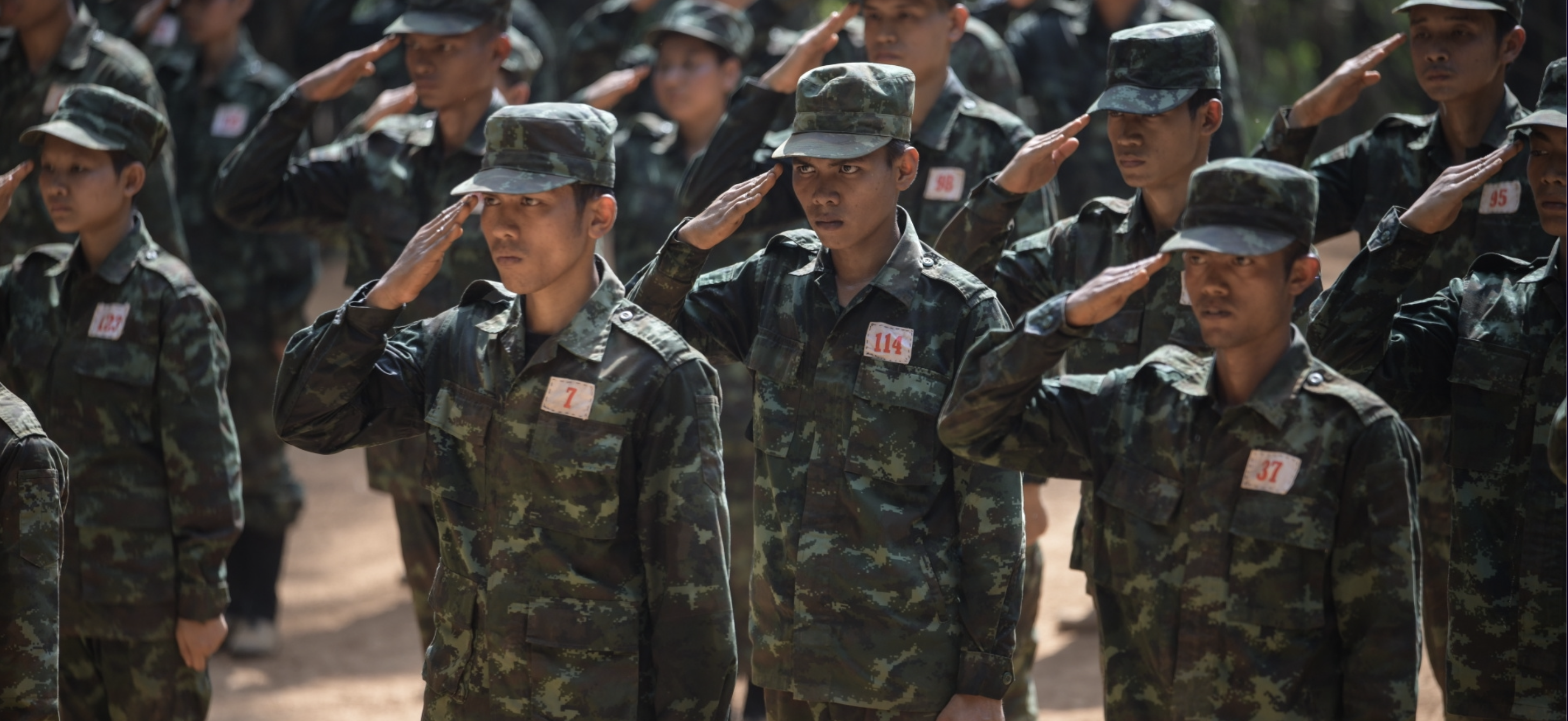
The Coup:
Politicians in Myanmar were usually split into two parties; the Union Solidarity and Development Party (USDP), a group who worked closely with Myanmar’s Junta, and the opposition, the National League for Democracy (NLD). Representatives involved with the USDP controlled the country’s politics until 2020, when an election handed most of their seats to members of the NLD. The USDP and the military rejected the results, alleging fraud, though this was denied by the election commision. Refusing to acknowledge the results of te democratic election, they seized power at the beginning of the term, detaining dissenting politicians and declaring a state of emergency (still in place), prompting demonstrations of citizen unrest. As a result different factions, many democratic but some out of greed and opportunity, have emerged to compete for control, throwing the state into civil war, and prompting Myanmar’s Junta to implement drastic counter measures (McKenna & Teekah).
“National Survey of Myanmar: January – February 2024.” International Republican Institute, 19 July 2024, www.iri.org/resources/national-survey-of-myanmar-january-february-2024/.
“National Survey of Myanmar: January – February 2024.” International Republican Institute, 19 July 2024, www.iri.org/resources/national-survey-of-myanmar-january-february-2024/.
"I just don't care about the government and the ways they've been doing things I guess. "
- Lawrence Aung, a Burmese asylum seeker
The Human Cost of Civil War
Many civilians face extreme violence and hardship due to the Junta’s harsh retaliation against the rebel groups, using heavy ammunitions to deploy scorched earth tactics leaving complete devastation in their path, with no chance of recovery (Hein, 2025). Currently, half of Myanmar’s people are in poverty, and the country’s currency has lost 70% of its value (Win, 2025). Many are trying to leave with no luck. "My dad tried to visit me but his visa got denied", said Aung, "but my brothers visa went through so I don't know how they're doing that over there."
Homes destroyed after air and artillery strikes in Mung Lai Hkyet village, in Kachin State, Myanmar, October 10, 2023. Sourced from: “Myanmar: Airstrike on Village an Apparent War Crime.” Human Rights Watch, 17 Oct. 2023, www.hrw.org/news/2023/10/17/myanmar-airstrike-village-apparent-war-crime.
Homes destroyed after air and artillery strikes in Mung Lai Hkyet village, in Kachin State, Myanmar, October 10, 2023. Sourced from: “Myanmar: Airstrike on Village an Apparent War Crime.” Human Rights Watch, 17 Oct. 2023, www.hrw.org/news/2023/10/17/myanmar-airstrike-village-apparent-war-crime.
Volunteers help evacuate civilians from Loikaw last month [Myo Satt Hla Thaw/Al Jazeera]. Sourced from: “Myanmar: Airstrike on Village an Apparent War Crime.” Human Rights Watch, 17 Oct. 2023, www.hrw.org/news/2023/10/17/myanmar-airstrike-village-apparent-war-crime.
Volunteers help evacuate civilians from Loikaw last month [Myo Satt Hla Thaw/Al Jazeera]. Sourced from: “Myanmar: Airstrike on Village an Apparent War Crime.” Human Rights Watch, 17 Oct. 2023, www.hrw.org/news/2023/10/17/myanmar-airstrike-village-apparent-war-crime.
Karenni resistance forces claim the military has conducted at least 477 air strikes on the Loikaw area since November 11 [Myo Satt Hla Thaw/Al Jazeera]. Sourced from: Fishbein, Emily. “‘Fighting Is All around’: Myanmar Faces Deepening Humanitarian Crisis.” Al Jazeera, Al Jazeera, 14 Dec. 2023
Karenni resistance forces claim the military has conducted at least 477 air strikes on the Loikaw area since November 11 [Myo Satt Hla Thaw/Al Jazeera]. Sourced from: Fishbein, Emily. “‘Fighting Is All around’: Myanmar Faces Deepening Humanitarian Crisis.” Al Jazeera, Al Jazeera, 14 Dec. 2023
The aftermath of air and artillery strikes in Mung Lai Hkyet village, in Kachin State, Myanmar, October 10, 2023. Sourced from “Myanmar: Airstrike on Village an Apparent War Crime.” Human Rights Watch, 17 Oct. 2023, www.hrw.org/news/2023/10/17/myanmar-airstrike-village-apparent-war-crime.
The aftermath of air and artillery strikes in Mung Lai Hkyet village, in Kachin State, Myanmar, October 10, 2023. Sourced from “Myanmar: Airstrike on Village an Apparent War Crime.” Human Rights Watch, 17 Oct. 2023, www.hrw.org/news/2023/10/17/myanmar-airstrike-village-apparent-war-crime.
Locally-based volunteer groups are helping provide assistance to people displaced by the fighting in Karenni state [Myo Satt Hla Thaw/Al Jazeera]. Sourced from: Fishbein, Emily. “‘Fighting Is All around’: Myanmar Faces Deepening Humanitarian Crisis.” Al Jazeera, Al Jazeera, 14 Dec. 2023, www.aljazeera.com/news/2023/12/14/fighting-is-all-around-myanmar-faces-deepening-humanitarian-crisis.
Locally-based volunteer groups are helping provide assistance to people displaced by the fighting in Karenni state [Myo Satt Hla Thaw/Al Jazeera]. Sourced from: Fishbein, Emily. “‘Fighting Is All around’: Myanmar Faces Deepening Humanitarian Crisis.” Al Jazeera, Al Jazeera, 14 Dec. 2023, www.aljazeera.com/news/2023/12/14/fighting-is-all-around-myanmar-faces-deepening-humanitarian-crisis.
Displaced children take shelter in a hole dug in a forest in Myanmar’s Pupun district near the border with Thailand, after civilians fleeing airstrikes in their home villages were pushed back by Thai soldiers to the Myanmar side. Sourced from: Pierson, David, and HSAN HLAING. “Myanmar Accelerates toward a Civil War of ‘Unprecedented Scale.’” Los Angeles Times, Los Angeles Times, 9 Apr. 2021, www.latimes.com/world-nation/story/2021-04-09/myanmar-civil-war.
Displaced children take shelter in a hole dug in a forest in Myanmar’s Pupun district near the border with Thailand, after civilians fleeing airstrikes in their home villages were pushed back by Thai soldiers to the Myanmar side. Sourced from: Pierson, David, and HSAN HLAING. “Myanmar Accelerates toward a Civil War of ‘Unprecedented Scale.’” Los Angeles Times, Los Angeles Times, 9 Apr. 2021, www.latimes.com/world-nation/story/2021-04-09/myanmar-civil-war.
The daughter of Zwee Htet Soe, a protester killed during a demonstration March 3, cries at her father’s funeral in Yangon. Sourced by: Pierson, David, and HSAN HLAING. “Myanmar Accelerates toward a Civil War of ‘Unprecedented Scale.’” Los Angeles Times, Los Angeles Times, 9 Apr. 2021, www.latimes.com/world-nation/story/2021-04-09/myanmar-civil-war.
The daughter of Zwee Htet Soe, a protester killed during a demonstration March 3, cries at her father’s funeral in Yangon. Sourced by: Pierson, David, and HSAN HLAING. “Myanmar Accelerates toward a Civil War of ‘Unprecedented Scale.’” Los Angeles Times, Los Angeles Times, 9 Apr. 2021, www.latimes.com/world-nation/story/2021-04-09/myanmar-civil-war.
Forced To Join The Military:
The Junta has passed an official notice to all civians making men between ages 18-35, and women, 18-27, forcing them to be drafted to fight the civil war, going so far as to kidnap youth in nightly village raids. Those in specialized careers, like medical professionals could be conscripted until they’re 45 (Reuters, 2024). As of March 2024, over 30,000 have been forcibly enlisted. Mercy Chriesty Barends, an ASEAN Parliamentarians for Human Rights Co-Chairperson and member of Indonesia’s House of Representatives disapproves of this tactic. “Forced conscription inflicts profound trauma. It disrupts education, tears families apart, displaces entire communities, and perpetuates cycles of violence. The militarization of society not only deepens authoritarian control but also fosters a culture of fear and repression that feeds on itself. (APHR, 2024).
Many civilians were able to flee to Thailand but were deported, with many returning being forced to join Myanmar's military (Watch, 2025). The Junta has also restricted foreign travel for those eligible to serve in the Junta (France 24, 2025).
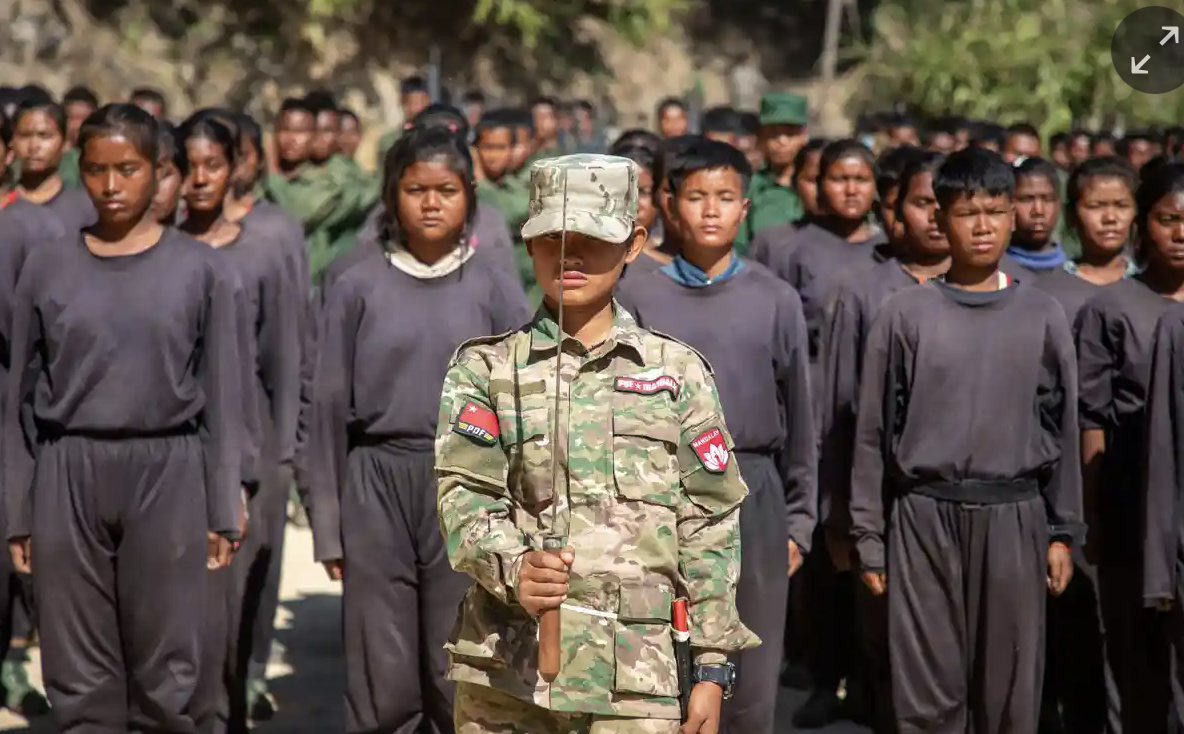



What's Next For Myanmar?
Despite international peacekeeping efforts, the Junta is not interested in negotiating with any rebel groups for peace. Attitudes are shifting against the defense forces though, shown below. "If theres like some kind of governing system thats trying to overtake certain rights/freedoms from civilians them I'm obviously not gonna be on that side. I'm with the people", comments Alondra Sotelo-Fernandez who is an American learning about the conflict."
Sourced by “National Survey of Myanmar: January – February 2024.” International Republican Institute, 19 July 2024
Sourced by “National Survey of Myanmar: January – February 2024.” International Republican Institute, 19 July 2024
As of today, the conflict is still ongoing, the economic strain worsened by current environmental disasters, with no side able to gain ground over another. Civilians and democratic officials are still holding out that there could be a negotiation for peace (Fides, 2025).

